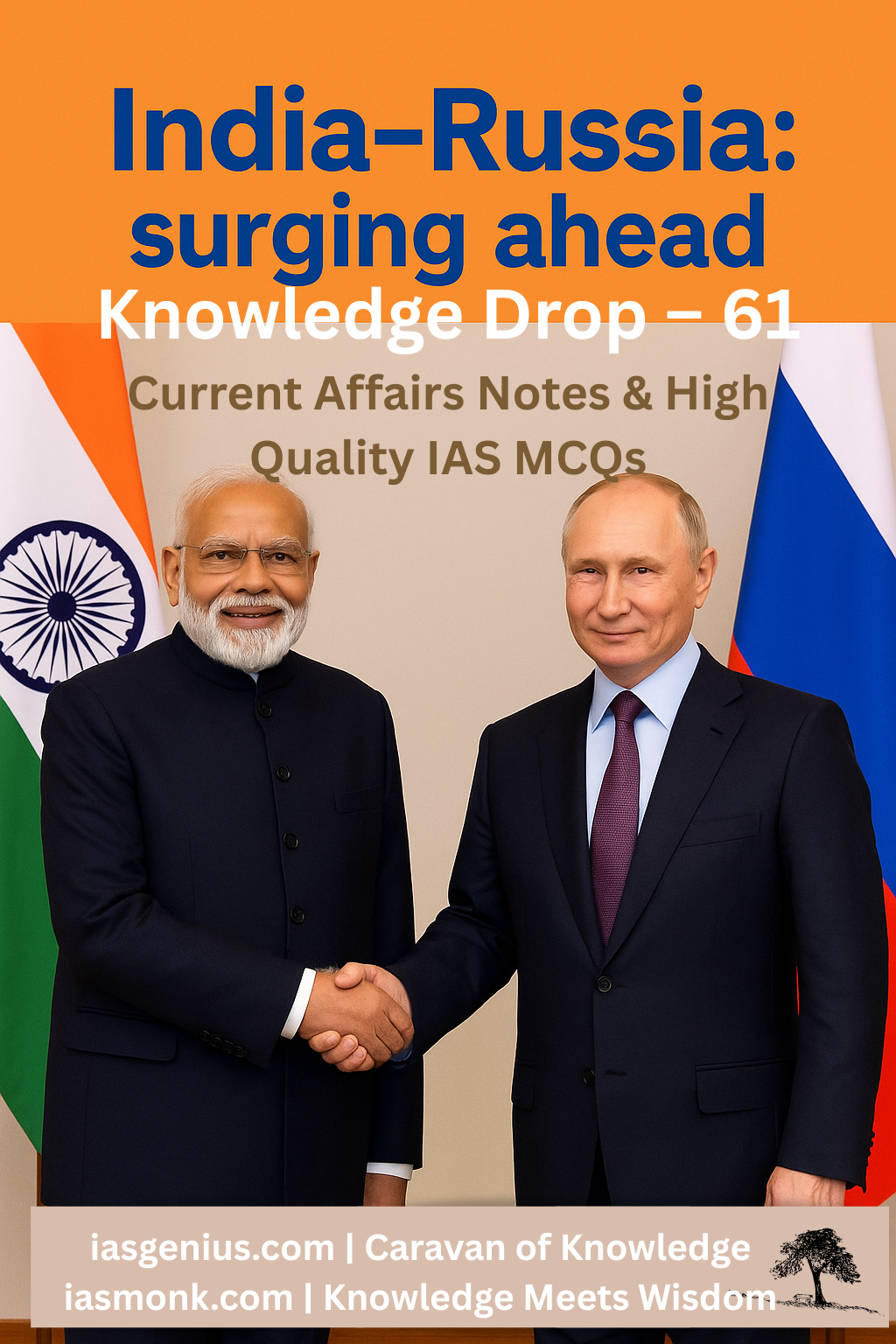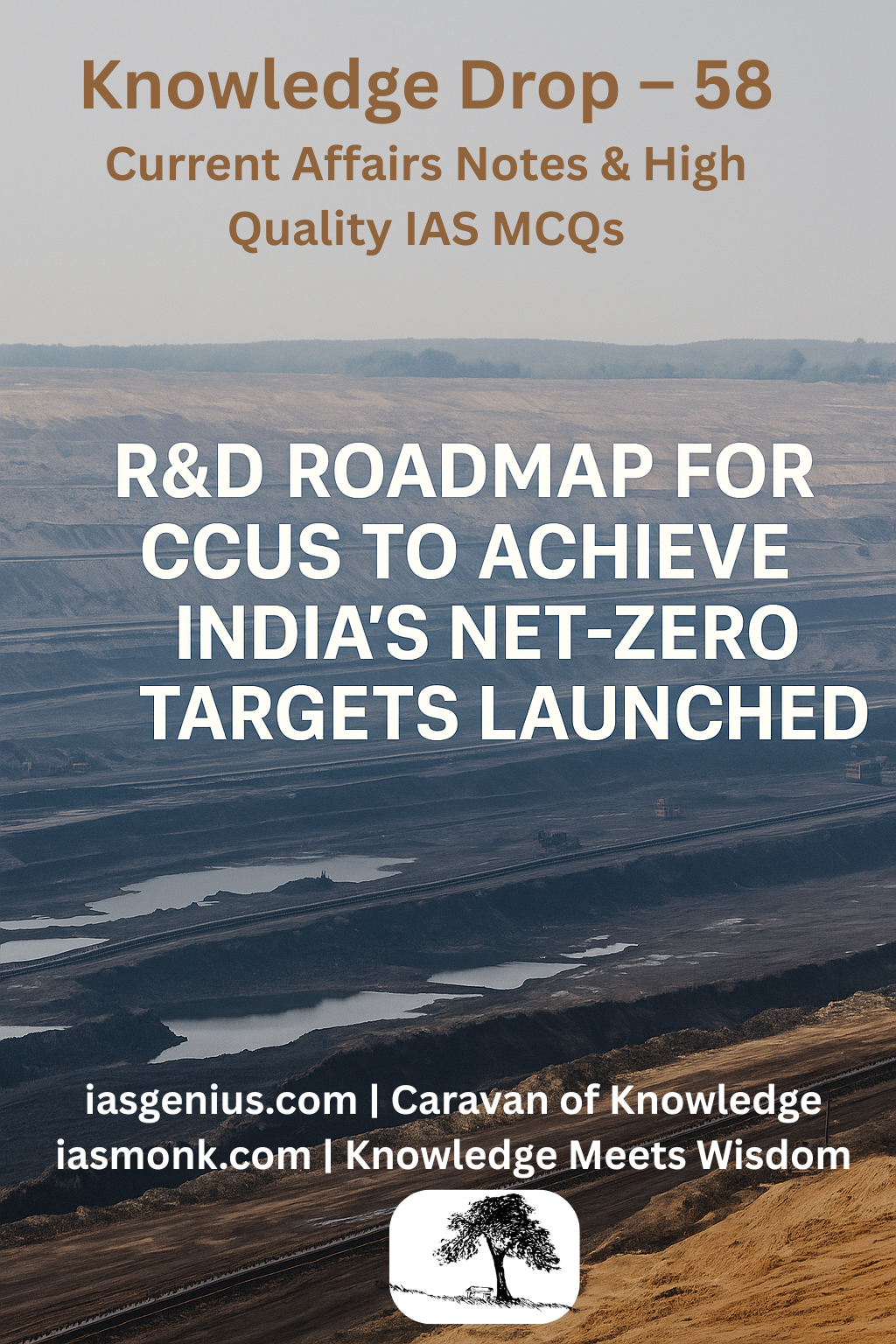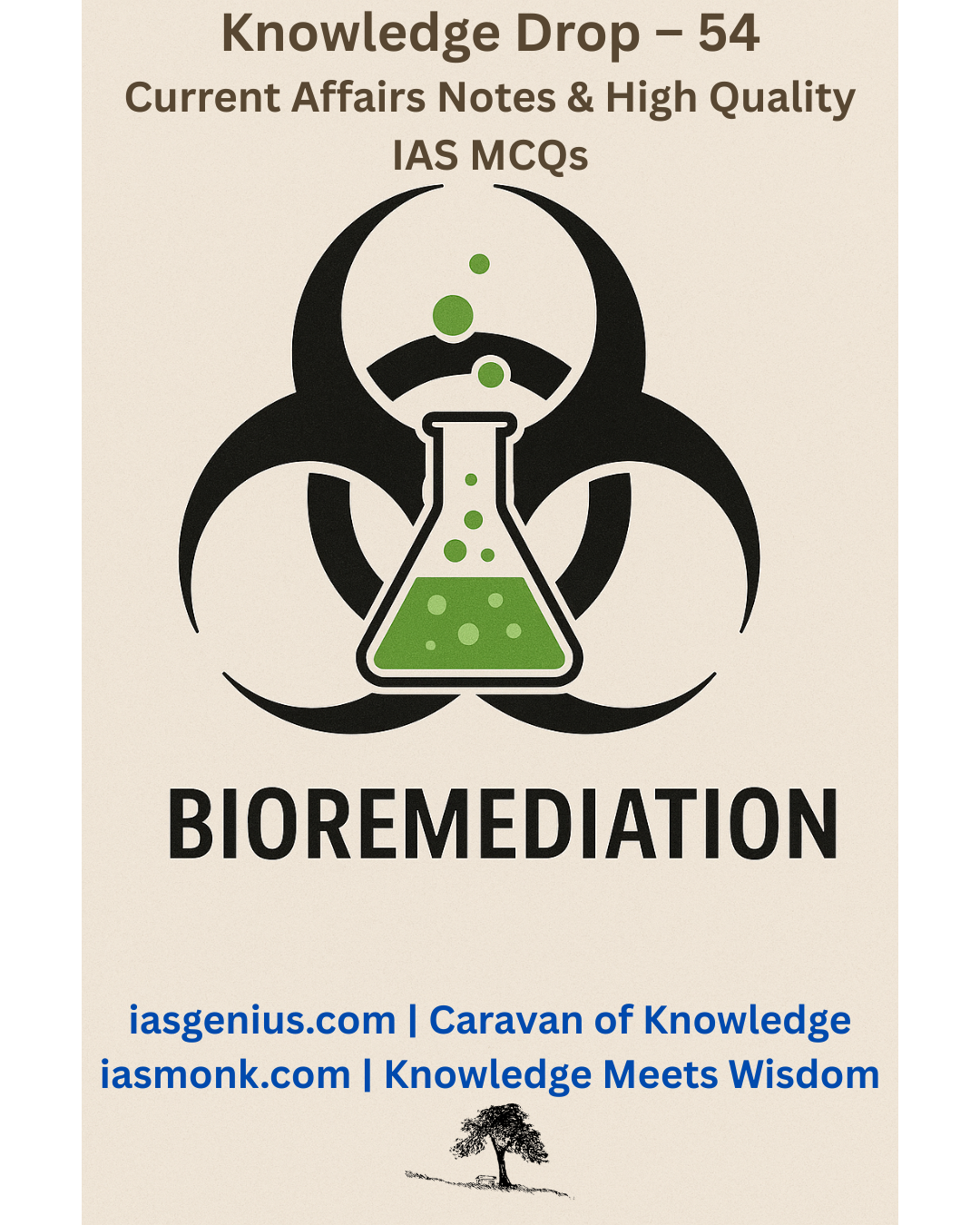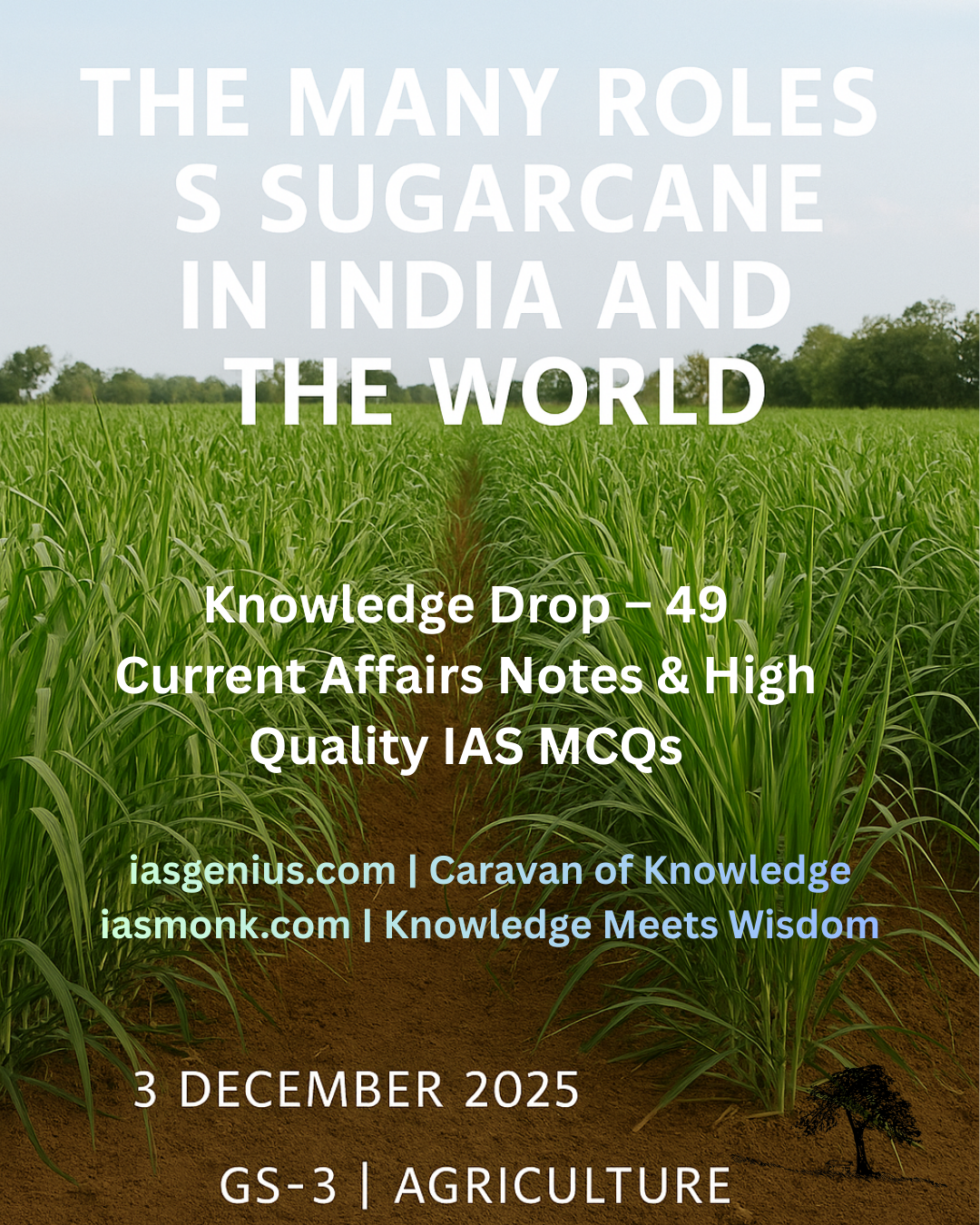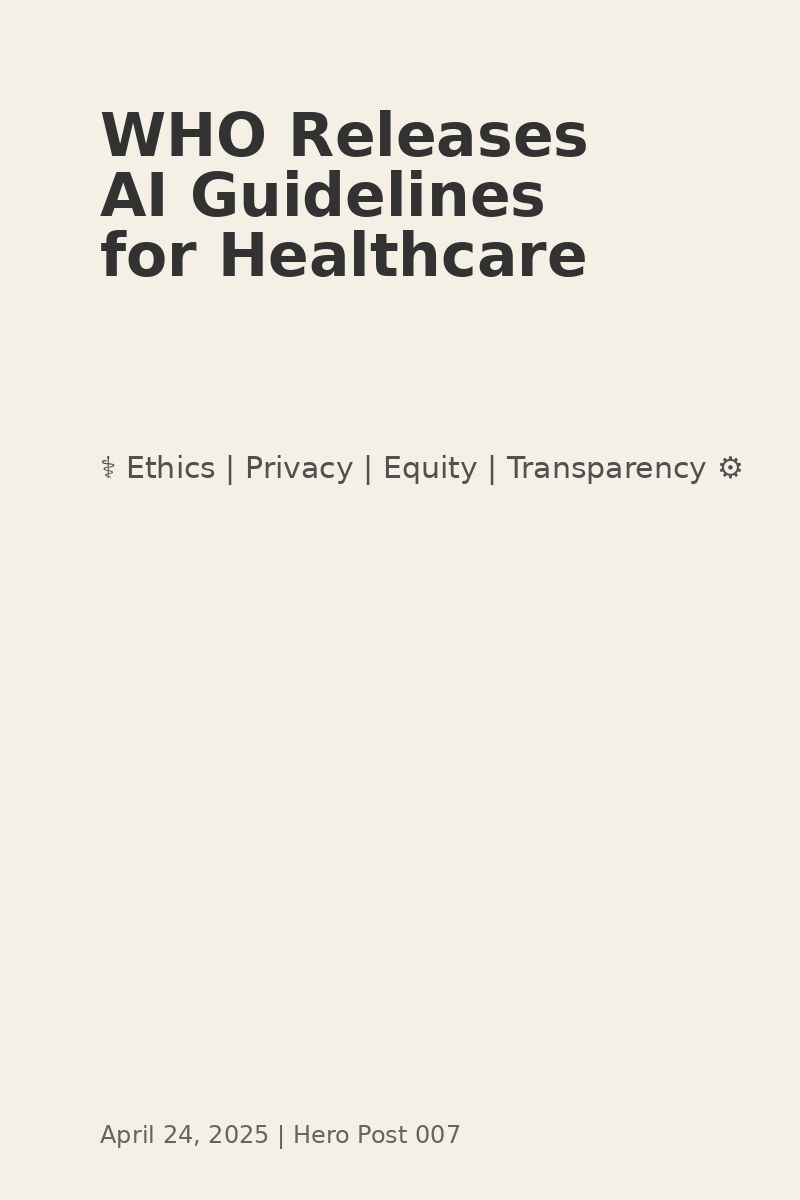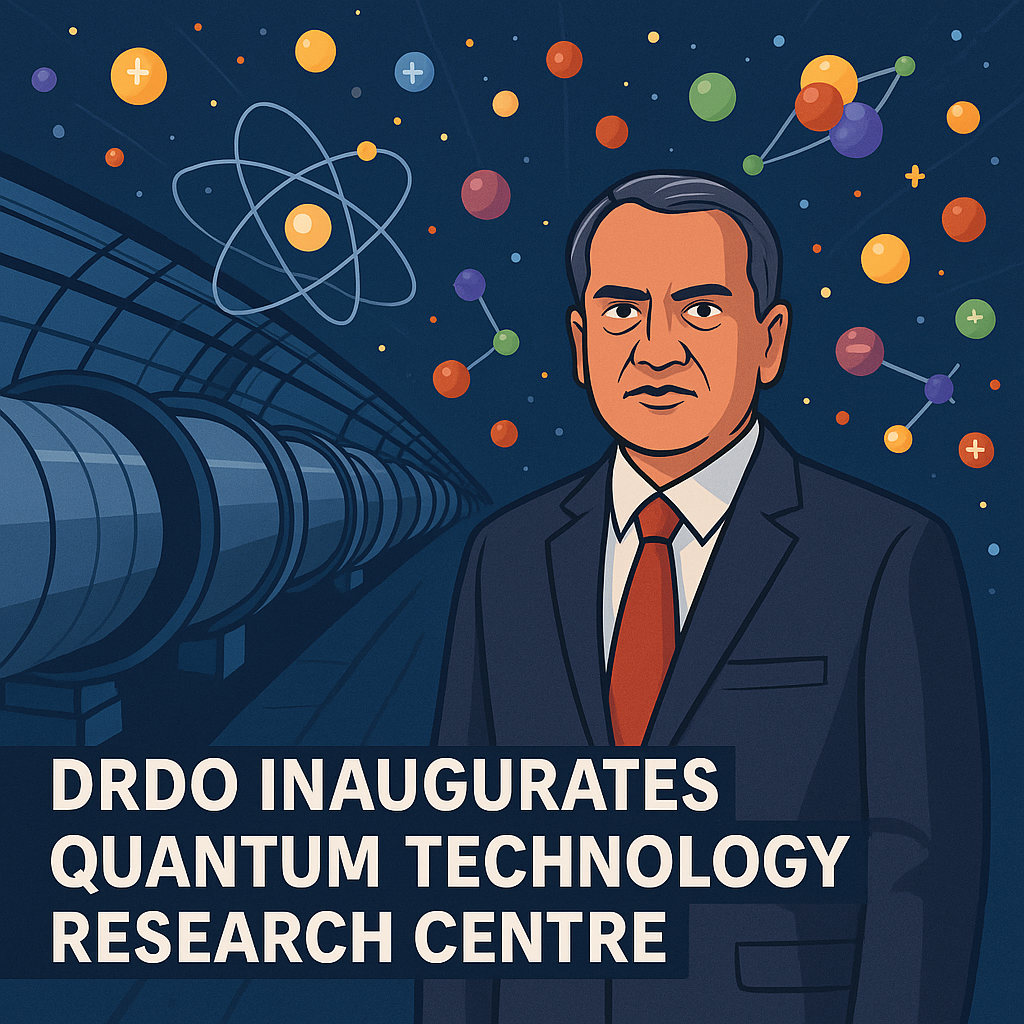
🧭June 1, 2025 Post 1: Quantum Leap for National Security: DRDO’s Quantum Technology Research Centre Inaugurated | High Quality Mains Essay | Prelims MCQs
Quantum Leap for National Security: DRDO’s Quantum Technology Research Centre Inaugurated

SCIENCE & TECHNOLOGY
Post Date: June 1, 2025
Syllabus: GS Paper 3 – Science and Technology | Defence Technology | Innovation Ecosystem
Category: Quantum Technology / Indigenous Defence R&D / Strategic Innovation
🎯 Thematic Focus:
Quantum technology for ultra-secure communication, timekeeping, sensing, and national defence
🌿 Intro Whisper:
In a realm where particles dance in superposition and time can be trapped in vapour cells, India gears up for a future that can’t be hacked, only understood — quantum by quantum.
🗝️ Key Highlights
- Quantum Technology Research Centre (QTRC) inaugurated by DRDO to boost indigenous quantum capabilities for strategic and defence applications.
- The centre focuses on ultra-secure communications, high-precision sensors, and atomic timekeeping to address challenges in GNSS-denied environments.
- Developed by Scientific Analysis Group (SAG) and Solid State Physics Lab (SSPL) — two critical arms of DRDO.
🧪 Core Experimental Capabilities at QTRC
- Quantum Key Distribution (QKD): Developing unhackable communications systems using quantum cryptography.
- Alkali Vapor Cell Characterisation: Enables ultra-precise atomic sensors.
- Single-Photon Source Testing: Supports applications in secure optics and detection systems.
- Atomic Magnetometer R&D: For detecting subtle magnetic fields using quantum properties.
- Coherent Population Trapping (CPT) Atomic Clocks: Enables precise navigation where GPS signals fail.
🌐 National Quantum Mission (NQM) – India’s Quantum Roadmap
- Launched in 2023, the NQM aims to create a vibrant quantum R&D ecosystem by 2031.
- Focus on developing 50–1000 qubit quantum computers, quantum networks, satellite-based QKD, and quantum sensors/metrology.
- Four Thematic Hubs (T-Hubs) established:
- IISc Bengaluru
- IIT Madras + C-DOT Delhi
- IIT Bombay
- IIT Delhi
🧠 Quantum Technology Domains
- Quantum Communication – Unbreakable data transmission using entanglement.
- Quantum Computation – Exponential computing speedups using qubits.
- Quantum Simulation – Emulates complex molecular or physical systems.
- Quantum Sensing & Metrology – Extreme precision in navigation, time, and field detection.
🔐 Why It Matters: Post-Quantum Security
- As classical encryption becomes vulnerable to future quantum computers, quantum-resistant systems like QKD are crucial to secure defence, space, and financial communications.
- QTRC positions India as a self-reliant quantum power, both strategically and scientifically.
🧭 GS Mains Mapping
- GS Paper 3:
- Quantum Technologies & their Applications
- Defence R&D, Indigenous Technology
- Cybersecurity and Strategic Communication
- Innovation Ecosystem and Missions
💭 A Thought Spark — by IAS Monk
“The smallest particles guard the biggest secrets. With every photon encrypted, the future is no longer written in code — but in quantum entanglement.”
High Quality Mains Essay For Practice :
Word Limit 1000-1200
Unlocking the Quantum Frontier: India’s Journey Toward Strategic and Scientific Supremacy
Introduction
As the world navigates the Fourth Industrial Revolution, Quantum Technology (QT) has emerged as a cornerstone of transformative change. Rooted in the principles of quantum mechanics — a domain where particles exist in superposition, entangle across distances, and behave probabilistically — QT promises capabilities that far surpass those of classical systems. From unbreakable communication systems to ultra-precise sensors and exponential computing speed, quantum technologies are poised to reshape national security, scientific discovery, and economic competitiveness.
India, recognizing the strategic and economic potential of this frontier, has undertaken ambitious initiatives to become a global leader in quantum innovation. With the recent inauguration of the Quantum Technology Research Centre (QTRC) by DRDO and the rollout of the National Quantum Mission (NQM), the country is charting a long-term roadmap to develop indigenous quantum capabilities. This essay explores the relevance, progress, and future prospects of India’s journey through the quantum landscape.
What Is Quantum Technology?
Quantum technology applies the principles of quantum mechanics — such as superposition, entanglement, and quantum tunneling — to develop next-generation devices and systems. Unlike classical systems, quantum systems operate in multiple states simultaneously, enabling radically different methods of computation, communication, sensing, and encryption.
Four Pillars of Quantum Technology:
- Quantum Communication: Enables ultra-secure communication using quantum encryption (e.g., Quantum Key Distribution).
- Quantum Computation: Harnesses qubits for solving complex problems exponentially faster than classical computers.
- Quantum Simulation: Models molecular and atomic behavior for materials science, drug discovery, and physics.
- Quantum Sensing & Metrology: Provides unprecedented precision in measurement, navigation, and timing.
Why Quantum Technology Matters to India
- Strategic Sovereignty: As quantum computers become capable of breaking classical encryption, countries must develop quantum-secure communication systems to protect defence, finance, and critical infrastructure.
- Scientific Edge: Quantum simulators can help unravel complex chemical reactions, enabling advances in pharmaceuticals, energy storage, and climate modeling.
- Economic Competitiveness: Quantum technology is forecasted to create multi-trillion dollar global industries in the next two decades. India must secure its share of this opportunity.
- National Security: Indigenous quantum research ensures that India is not dependent on foreign powers for critical technologies, especially in the era of geopolitical cyber-rivalries.
India’s Quantum Milestones: From Seeds to Structure
1. Quantum Technology Research Centre (QTRC) – DRDO
In May 2025, the Defence Research and Development Organisation (DRDO) inaugurated the QTRC, focusing on defence-grade quantum innovation. The centre is spearheaded by Scientific Analysis Group (SAG) and Solid State Physics Laboratory (SSPL).
Key Capabilities Include:
- Quantum Key Distribution (QKD) platforms for unbreakable secure channels.
- Micro-fabricated Alkali Vapor Cell systems for quantum timekeeping and sensing.
- Optically pumped Atomic Magnetometers for detection of subtle magnetic fields.
- Coherent Population Trapping (CPT) based atomic clocks, essential in GPS-denied zones.
- Evaluation of single-photon sources and quantum lasers for high-precision devices.
This initiative solidifies India’s place in post-quantum cryptography, securing the nation’s future military communications and satellite networks.
2. National Quantum Mission (NQM) – Launched in 2023
The National Quantum Mission (NQM), approved by the Cabinet in 2023 with an outlay extending till 2030-31, is the flagship quantum initiative to foster a robust scientific, industrial, and innovation ecosystem.
Objectives:
- Build quantum computers with 50–1000 physical qubits across platforms like superconducting and photonic systems.
- Establish satellite-based and inter-city quantum communication networks (up to 2000 km).
- Develop multi-node quantum networks with quantum memories.
- Support creation of quantum magnetometers, atomic clocks, and solid-state quantum devices.
- Promote materials innovation (superconductors, topological insulators, etc.) for device fabrication.
Implementation Hubs:
- IISc Bengaluru
- IIT Madras + Centre for Development of Telematics (C-DOT), Delhi
- IIT Bombay
- IIT Delhi
These Thematic Hubs (T-Hubs) coordinate 14 Technical Groups across 17 states and 2 UTs, drawing in national laboratories, start-ups, and industries.
International Context: Where Does India Stand?
While India has entered the quantum race with determination, global players such as the USA, China, EU, and Canada have already invested billions into research and infrastructure.
- USA: National Quantum Initiative Act (2018) + Quantum Computing Roadmap (IBM, Google).
- China: World’s first quantum satellite “Micius” and national quantum network linking Beijing and Shanghai.
- EU: €1 billion Quantum Flagship Programme.
- Canada: Focus on quantum startups (e.g., Xanadu) and superconducting platforms.
India’s approach is unique in its blend of defence-oriented applications, academic R&D, and industrial collaboration, especially with the Make-in-India and Atmanirbhar Bharat paradigms.
Challenges Ahead for India’s Quantum Ambitions
- Talent Shortage: Quantum research demands niche expertise in quantum physics, optics, computer science, and materials — areas where India needs deeper academic pipelines.
- Infrastructure Gaps: Quantum labs require ultra-low temperature cryogenics, single-photon detectors, high-vacuum systems — expensive and complex to scale.
- Funding Volatility: Sustained investments and long-term grants are crucial, as quantum systems take years to mature.
- Industry Participation: Start-up and private sector involvement in QT is still nascent. India must emulate models like DARPA (USA) and NSTC (Canada) to enable industry-led innovation.
Future Prospects and Policy Recommendations
A) Integrate Quantum into National Cybersecurity Strategy
- India should develop quantum-resistant algorithms and deploy QKD-based protocols in defence, nuclear, and financial sectors.
B) Quantum Education Pipeline
- Create specialised MSc and PhD tracks in quantum technology across IITs, IISERs, and central universities.
- Launch Quantum Talent Fellowships to retain postdocs and attract global talent.
C) Industry-Academia-Defence Consortium
- Encourage DRDO, ISRO, MEITY, and BARC to form a Quantum Innovation Consortium with private firms (e.g., Tata, Infosys, Bellatrix).
D) Global Collaboration
- Leverage ties with EU, Israel, Singapore, and the Quad countries to co-develop quantum protocols and research platforms.
E) Startup Ecosystem Enablement
- Provide quantum incubators, patent incentives, and fast-track funding for QT-based start-ups.
Conclusion
India’s entry into the quantum era is not just about scientific prestige, but about strategic resilience, technological self-reliance, and economic foresight. With visionary programs like the National Quantum Mission and the establishment of specialized centres like the QTRC, the nation has taken firm steps toward building an Atmanirbhar Quantum Bharat.
However, quantum breakthroughs are not achieved overnight. They require patient investment, interdisciplinary thinking, and a fearless innovation culture. If nurtured consistently, India could soon evolve from being a knowledge consumer to becoming a global quantum powerhouse.
Closing Quote
“India’s quantum future lies not in imitation, but in imagination. The science of the very small may just decide the fate of the very great.”
— IAS Monk
Target IAS-26: Daily MCQs :
📌 Prelims Practice MCQs
Topic: Quantum Leap for National Security:
MCQ 1 – Type 1: How many of the above statements are correct?
Consider the following statements regarding the Quantum Technology Research Centre (QTRC) inaugurated by DRDO:
1. The QTRC includes facilities for Quantum Key Distribution testing.
2. It focuses only on quantum computing and does not engage in quantum sensing.
3. It is spearheaded by DRDO’s Scientific Analysis Group and Solid State Physics Laboratory.
4. It develops optically pumped atomic magnetometers and atomic clocks.
How many of the above statements are correct?
A) Only two
B) Only three
C) All four
D) Only one
🌀 Didn’t get it? Click here (▸) for the Correct Answer & Explanation
✅ Correct Answer: B) Only three
🧠 Explanation:
•1) ✅ True – QTRC develops platforms for testing quantum key distribution.
•2) ❌ False – QTRC also focuses on quantum sensing and foundational technologies.
•3) ✅ True – Led by Scientific Analysis Group and SSPL (DRDO).
•4) ✅ True – It includes research on atomic magnetometers and ultra-small atomic clocks.
MCQ 2 – Type 2: Two Statements Based
Consider the following statements regarding Quantum Technology in India:
1. The National Quantum Mission aims to develop quantum computers with up to 1000 physical qubits in the next eight years.
2. The Indian Space Research Organisation (ISRO) is the lead agency implementing the National Quantum Mission.
Which of the above statements is/are correct?
A) Only 1 is correct
B) Only 2 is correct
C) Both are correct
D) Neither is correct
🌀 Didn’t get it? Click here (▸) for the Correct Answer & Explanation
✅ Correct Answer: A) Only 1 is correct
🧠 Explanation:
•1) ✅ True – The NQM targets quantum computers with 50–1000 physical qubits.
•2) ❌ False – NQM is implemented through thematic hubs under DST, not ISRO.
MCQ 3 – Type 3: Which of the statements is/are correct?
Which of the following are focus areas under India’s National Quantum Mission (NQM)?
1. Development of quantum materials like superconductors and topological insulators
2. Establishment of satellite-based quantum communication networks
3. Deployment of artificial general intelligence in quantum robotics
4. Design of atomic clocks and quantum magnetometers
Select the correct code:
A) 1, 2 and 4 only
B) 1, 3 and 4 only
C) 2, 3 and 4 only
D) All four
🌀 Didn’t get it? Click here (▸) for the Correct Answer & Explanation
✅ Correct Answer: A) 1, 2 and 4 only
🧠 Explanation:
•1) ✅ True – Quantum materials are a key component of NQM.
•2) ✅ True – NQM aims for satellite and inter-city quantum communication.
•3) ❌ False – Quantum robotics is not a stated goal under NQM.
•4) ✅ True – Developing atomic clocks and magnetometers is a mission target.
MCQ 4 – Type 4: Direct Fact
Which of the following institutions is not among the four Thematic Hubs of the National Quantum Mission?
A) Indian Institute of Science (IISc), Bengaluru
B) Indian Institute of Technology (IIT), Bombay
C) Indian Statistical Institute (ISI), Kolkata
D) Indian Institute of Technology (IIT), Madras
🌀 Didn’t get it? Click here (▸) for the Correct Answer & Explanation.
✅ Correct Answer: C) Indian Statistical Institute (ISI), Kolkata
🧠 Explanation:
•The four Thematic Hubs (T-Hubs) are located at IISc Bengaluru, IIT Madras, IIT Bombay, and IIT Delhi. ISI Kolkata is not a designated T-Hub under NQM.

